So, I have one of these...

... and I have one of these ...

... and, of course, I've left my TTL-level breakout elsewhere. The circuit is doing what it's supposed to, but I *really really* want to be able to dump data in to its serial port. So, what to do? Well, start by taking stock: no wheelbarrows, but I have a terrible soldering iron, some solder, a lot of ethernet cable, superglue, an exacto knife, and some headers. Hmm, I wonder what's inside that KeySpan.
Fortunately it's held together with plastic clips and nothing else, so it's easy enough to poke around inside.
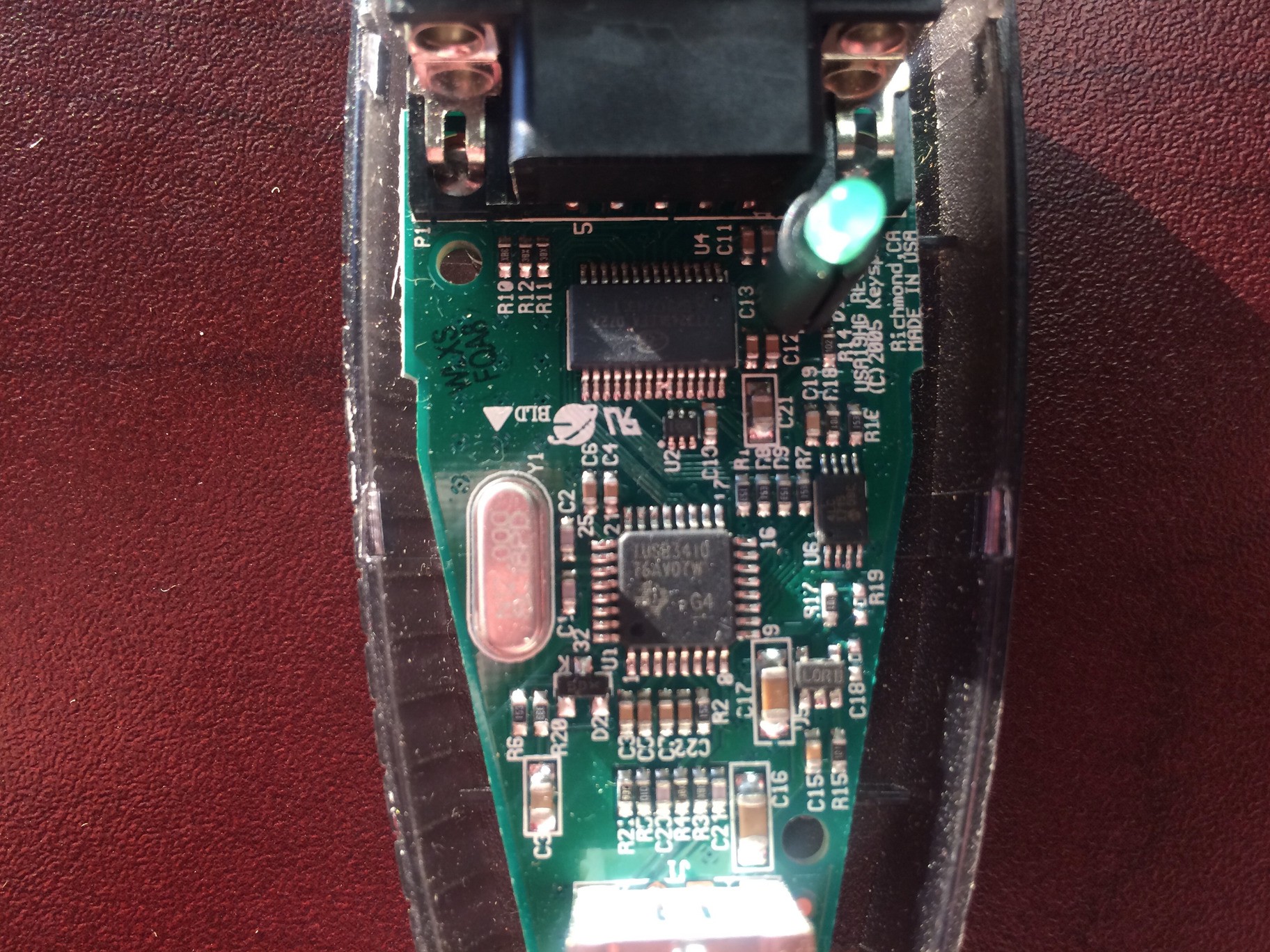
Not much there, and as expected, there's a nice looking rs232 converter sitting in the middle. Somewhere in there I bet the signals I need are hiding! Time to ferret them out! It's a TUSB3410, a TI USB-to-RS232 converter. A quick look at the datasheet shows what I want:
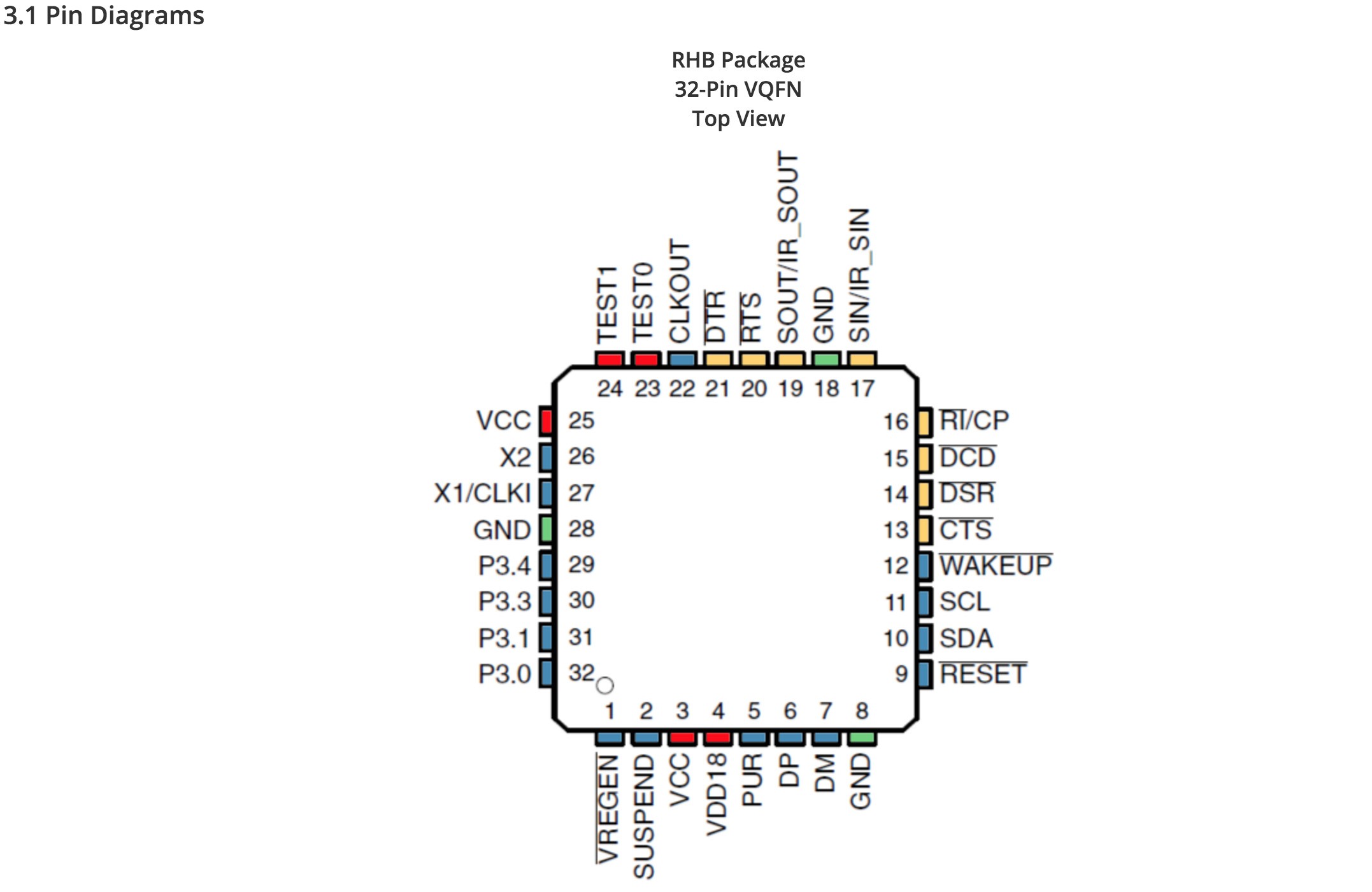
From here, with a good workbench, this would be an academic exercise. Of course I didn't have a good workbench; I had an imprecise butane-powered soldering iron and some ethernet cable. Minimal is the word, then: I want to touch that board as little as possible. And I want avoid soldering on the chip itself if I can.
I want pins 17, 19, and 21. I also need a ground and +5v from somewhere. A quick job of exacto-ing a hole in the top of the keyspan case, superglueing in a female header, cutting open some ethernet cable for the wire, and attaching them to the header pins leave me thinking about how to attach to the board. I've put it off long enough: it's time to make it work or break it horribly.
Ground, that's easy. Tie to the ground plane on the back side of the board. I chose the USB shell attachment; can't do much damage there.
+5v: well, pin 25 is Vcc, which I assume is 5v or close enough. (The datasheet says it's 3.6v max, actually, but I didn't bother checking until after this all worked!)
Looking at the circuit board, then: pin 25 is actually labeled, on the left side of C6. So my power line comes from the left side of that capacitor, which is a fairly large target. That's the easy ones out of the way; what about the data signals?
Well, I stared that that board for another couple minutes trying to get a good sense of where the data went. As far as I can tell there's no good spot; it's right on the pins. So here goes nothing...
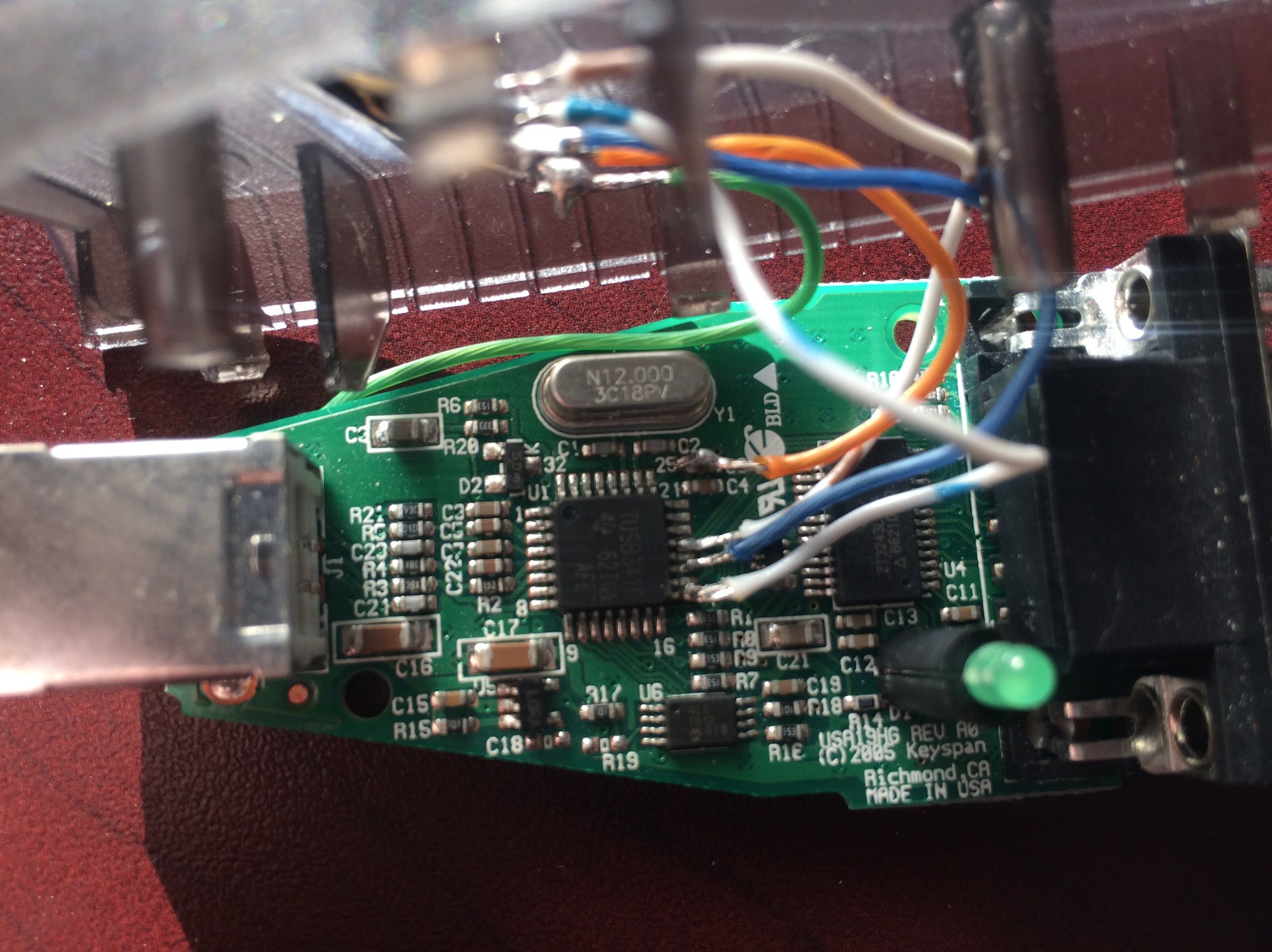
Phew, harrowing. Good job, little Radio Shack butane soldering iron that I bought back in 1989. I still hate to love you though.
Close it all up. Nervously plug it all in, and... amazingly, no magic smoke escape. It even works!

... That was basically how it happened: two years ago. The pins are a little loose in the header and I'm going to add some superglue behind them soon, but it's still going strong. It works so well, and is so convenient, that I've even misplaced all of my FTDI break-outs. :)
 Jorj Bauer
Jorj Bauer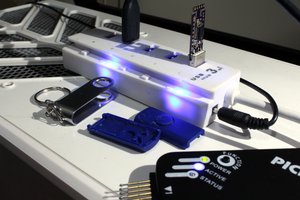
 Jarrett
Jarrett
 Kevin Santo Cappuccio
Kevin Santo Cappuccio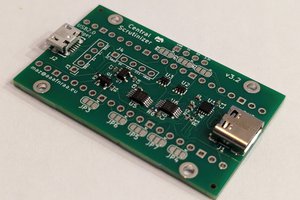
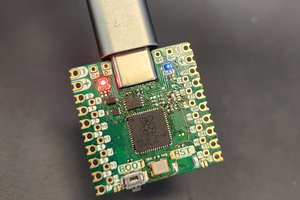
 Chris
Chris